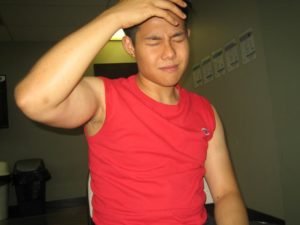A brain attack or stroke occurs once a blood clot blocks the blood flow to a part of the brain or when a blood vessel in the brain breaks and disrupts the blood flow to various parts of the brain. Once the oxygenated blood does not reach the brain, the brain cells start to die off and lasting brain damage can occur.
Stroke is one of the leading causes of death and affects thousands of individuals every year. Most stroke victims survive and recover with proper rehabilitation and physical therapy. Nevertheless, complications are likely to develop which includes the following:
- Difficulty speaking or swallowing
- Muscle weakness or paralysis on one side of the body
- Changes in the mood or behavior
- Pain, tingling or numbness on the affected part of the body
In most cases, stroke can also lead to temporary or lasting disability depending on the severity of the stroke and the time frame blood was blocked to the brain. When it comes to a stroke, a vital point is to minimize brain damage. As long as the signs and symptoms are obvious, it is best to seek medical care. This will ensure a better chance of recovery as well as avoiding severe brain damage or disability.
Signs and symptoms to watch out for
Abrupt numbness or weakness in the legs, arms or face is indicative of a stroke, especially if the weakness affects only one side of the body. When the individual smiles in front of a mirror, one side of the face tends to droop. If the individual tries to raise both arms, there is difficulty in lifting one side. Depending on the harshness, there might be paralysis on one side of the body.
Abrupt confusion

Stroke can cause sudden confusion. When an individual is engaged in an activity, he/she will abruptly experience difficulty thinking, speaking or understanding speech.
Sudden balance loss
The weakness on one side of the body will cause difficulty with walking, dizziness or loss of coordination or balance.
Sudden visual problems
The loss of vision or difficulty in seeing with one or both eyes can also occur. The individual might lose vision completely or suffer from double or blurry vision.
Abrupt headache
If a severe headache develops abruptly without any cause, it might indicate a stroke. Take note that this headache can be accompanied by vomiting or dizziness.
What is the next step?
If an individual is experiencing a stroke, he/she might have one or several symptoms. The symptoms can develop at a slow manner over hours or days. When it comes to a mini stroke or transient ischemic attack, the symptoms are momentary and typically improve within 1-2 hours. The symptoms might be due to a migraine, stress or nerve issues. To learn to recognize and manage a stroke, register for a first aid and CPR class with a credible provider near you.
Once the individual is taken to the hospital within the initial 3 hours of the first symptoms of a mini stroke, the doctor will provide a medication to dissolve the blood clots and restore the flow of blood to the brain.
Immediate action will improve the chances of recovery after a stroke while at the same time reducing the severity of the disabilities. The FAST test can help identify a stroke.
- F (face) – Ask the individual to smile and check for drooping on one side.
- A (arms) – Ask the individual to lift arms and observe for a downward drift on one side.
- S (speech) – Ask the individual to repeat a phrase without slurring.
- T (time) – Call for emergency assistance if an individual has signs of stroke.
